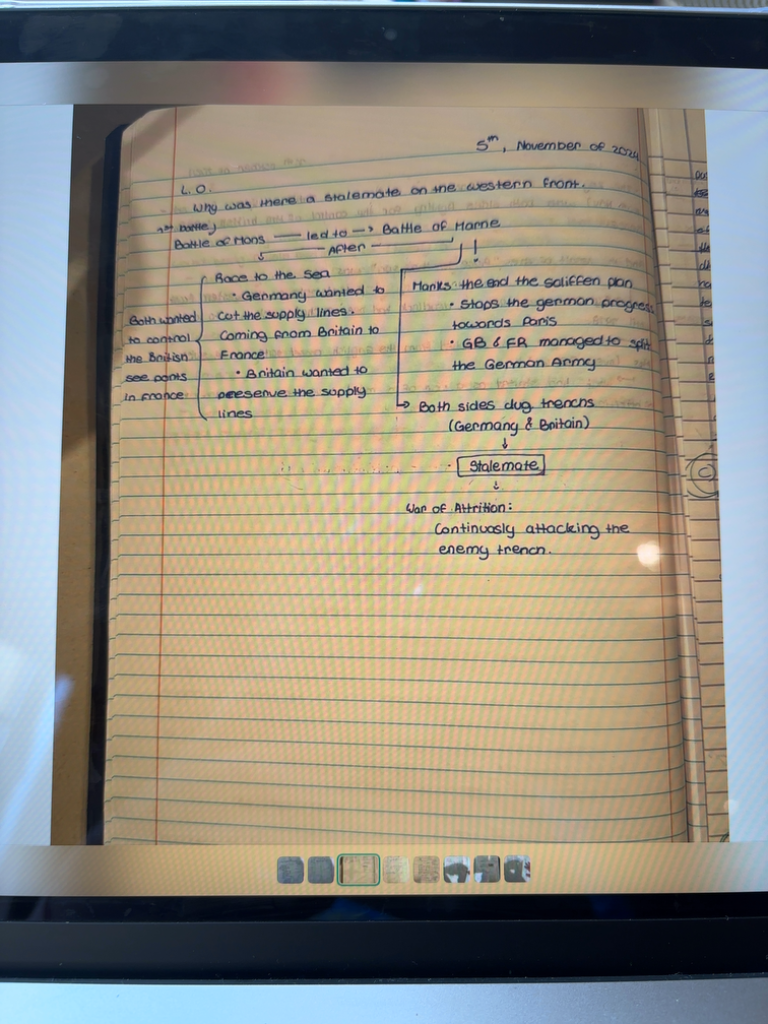Stalemate on the Western Front: Key Insights and Events
Stalemate on the Western Front

Key Points
Stalemate Explained
- A stalemate occurred during the Western Front of World War I due to both sides digging trenches.
- Thoughts: This led to a war of attrition where neither side could gain significant ground.
Race to the Sea
- Germany wanted to cut the supply lines coming from Britain to France.
- Britain aimed to preserve these supply lines.
- Additional Info: The control of supply lines was crucial for sustaining military operations, especially in extended conflicts.
Battle of the Marne
- The Battle of the Marne marked a significant turning point, halting German advances toward Paris.
- Significance: This battle demonstrated the effectiveness of coordinated defense among the Allies (GB & FR).
Both Sides Dug Trenches
- Conflict Overview: Germany and Britain engaged in trench warfare.
- Implication: This strategy resulted in a prolonged stalemate, requiring extensive resources and leading to tremendous casualties without significant territorial changes.
Who of Attrition
- Continuous attacks characterized this period, focusing on wearing down the enemy.
- Reflection: Strategies entailed attacking fortified positions which often led to heavy losses, thus emphasizing the grueling nature of trench warfare.
Summary
- The notes highlight the reasons behind the stalemate on the Western Front, focusing on strategic decisions by both Germany and Britain, illustrating the hardships of trench warfare, and outlining the essentials of military tactics during World War I.
Extended readings:
www.britannica.com
World War I - Battle of Marne, Trench Warfare, Mobilization | Britannica
www.vaia.com
Stalemate WW1: Duration, Definition, Reasons & Western Front - Vaia
en.wikipedia.org
Western Front (World War I) - Wikipedia